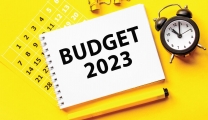Why transparent communication with candidates is so important
Effective communication is the cornerstone of successful recruitment. Yet, it’s a stark reality that a whopping 52% of candidates find themselves in a communication blackout for two to three months, or even more, after applying.
This is an alarming statistic that needs urgent redressal.
If you’re among those who have been neglecting candidate communication, it’s high time to pivot. Elevating your communication game is akin to unlocking a new dimension of growth and satisfaction.
Here are some compelling reasons to put communication at the forefront of your recruitment strategy:
- Sets the right expectations: Clear communication lays the foundation for a mutual understanding between both parties.
- Provides clarity: It eliminates ambiguity, creating a straightforward path for all involved.
- Drives next steps: Effective communication nudges candidates towards the subsequent stage of the process.
- Promotes transparency: Open communication fosters trust, a critical element in any relationship.
- Meets deadlines: Streamlined communication helps keep hiring processes and business projects on track.
- Creates a positive experience: Good communication cultivates a satisfying recruitment journey, enhancing your employer brand.
- Fosters lifelong relationships: It encourages repeated business and builds enduring partnerships.
- In essence, clear, timely, and personalized communication is a triple win – beneficial for your recruitment agency, your candidates, and your clients.
Now, let’s delve into how we can revolutionize your recruitment approach through the power of effective candidate communication.
8 cardinal rules for highly effective candidate communication
When it comes to connecting with job applicants effectively and in style, we swear by these 8 golden rules:
1. Map out the touchpoints:
You will be in touch with the candidates for the entire duration of their job placement experience and, most likely, even after that.
Every such interaction should be viewed as an opportunity to facilitate open communication, ensure transparency, and provide clarity on the next steps. Let’s break it down into phases:
Pre-application phase
Your pre-recruitment process is often the one that sets the tone for the experience that follows. Once the client confirms the vacancy details and terms, an attractive job announcement is in order.
And what better way to do this than a well-timed email to the identified pool of candidates, followed up by an SMS sharing quick details?
With a solid email tool like Sender, you could set all of this up on complete automation, all the way from the sign-up form to sending them a welcome email.
You can make use of many readily available email templates to craft quality emails for this.

During the application phase
Your candidates are likely undergoing a lot of stress and pressure while applying for multiple jobs across weeks if not months.
For example, candidate A could be juggling multiple job offers, while Candidate B might be grappling with recurring rejections.
No matter the case, it is crucial that you stay in active touch with all the candidates in a non-intrusive yet available manner at all times. For most staffing agencies, emails are the preferred channel to manage this communication at scale.
Interview phase
The interview process is where the candidates likely need you more than you need them. Stay communicative of the ongoings, provide timely status updates, and enable full knowledge of the next steps.
Post-application phase
After the selection process, once decisions have been made and communicated to the successful candidates, you enter a delicate phase where managing the expectations and emotions of those who didn’t make the cut is critical.
When communicating with rejected candidates, the hiring team should prioritize timely replies expressing gratitude for their interest and efforts. Include personalized feedback if possible, and encourage them to explore future opportunities, all while maintaining a respectful tone and professional stance at all times.
When refined and mastered, these rules will amplify your recruitment processes, making them more engaging, effective, and, ultimately, successful.
2. Communicate timelines
Always make it a point to provide clear timelines for each and every activity that the candidates experience through the talent acquisition process.
Communicating in a lucid and timely manner ensures that candidates come to you well-prepared at all times. Moreover, they come with clear minds since all they must do now is focus on presenting the best version of themselves in the following phases of interaction.
Doing this lucidly and well in advance ensures that the candidates come to you well-prepared at all times because now there are no nasty surprises stemming from a lack of clarity.
This in itself can play a huge role in ensuring higher job placement chances for the candidates, more satisfaction for your clients and hiring managers, and, ultimately, better profitability for your business.
3. Provide regular status updates
Keeping candidates informed about their progress can dramatically uplift their morale. It will also kill their desperation and allow them to stick to and trust your process till the very end.
Sharing regular updates also helps to reduce the chances of your candidates flipping to other competing staffing agencies.
4. Answer every question
Most of your candidates have tens if not thousands of questions running through their heads at any given time.
If you can communicate with them in a way that relieves their fears and boosts their trust in you, they will more often than not ensure a positive brand image of your business, which, in turn, will get you ‘free’ word-of-mouth candidates.
While the most common approach would be to set up a “Frequently Asked Questions (FAQ)” section on the website, we encourage you to set up a sequence of automated emails that answer their most common doubts, queries, and objections in a step-by-step manner.
5. Personalize your messaging
Your candidates are real people and would like to be treated as such. When using emails and SMS to communicate with them, use features such as ‘Segmentation’ and ‘Personalization’ to ensure deeper bonding and better business.
Most email marketing tools allow for this to happen very easily.
‘Segmentation’ allows you to group like candidates together, say, for instance, all the candidates applying for a particular job opening. Think of this as a mini-list.
While ‘Personalization’ enables you to talk to a mass audience of prospective new hires using personal data such as their first name, location, and any other custom information that adds value to the conversation.
For instance, use first-name personalization to call out your candidate by their name in your email subject line. This simple touch can significantly increase the chances of your email being opened and read.
Talk to people relevantly (segmentation) and personally (personalization), and they let themselves get more absorbed into the conversation.
6. Leverage text messaging
Did you know that 9 out of 10 people prefer SMS over phone calls?
Combine this with the fact that over 95% of SMS texts are read within the first 3 minutes of sending them, and you will start to wonder why you are not using SMS texting as a means of powerfully communicating with your candidates and clients.
SMS texts are non-intrusive, do not need internet on the receiver’s phone, are extremely low-cost, and have very high candidate engagement.
But SMSes are still extremely personal, and people feel about them differently.

So, it’s crucial to ensure that your popups and forms asking for the job seeker’s mobile number mention that they will receive correspondence from your desk and seek their consent for the same.
Even if you’re not tech-savvy, with user-friendly communication tools (like Sender), you can easily integrate text messaging into your recruitment process at every stage.
7. Construct rejection letters
Up to 70% of job candidates receive no feedback after being rejected post-phone screening.
This is a missed opportunity. Rejection emails and letters, if crafted thoughtfully, can positively shape the overall candidate experience.
Rejections are difficult to handle, and as such, we advise to:
- Personalize your rejection letters;
- Lay out the identified gaps without making them personal;
- Keep it concise and professional;
- Sum up the good and the great;
- Offer opportunities to work together for future vacancies and requirements;
- Encourage them to take up skilling programs or workshops to work on identified gaps.
- As a rule of thumb, write your rejection letters like the ones your former self would have liked to read, and you’ll be all set.
8. Ask for feedback
Feedback is almost always a two-way street.
As much as the feedback you convey to the rejected candidates, you can only build better experiences for the same candidates coming through again or for others by understanding the candidate’s real experience from their perspective.
Genuinely try to learn what they liked and didn’t like about working with you. Improve the processes you have overwhelming feedback about and simply make it better for the next lot.
This sets you apart from other hiring agencies and recruitment partners who think of recruitment as the next ‘gold rush’ and are simply happy making a quick buck.












Replies to This Discussion